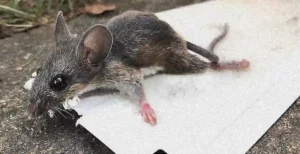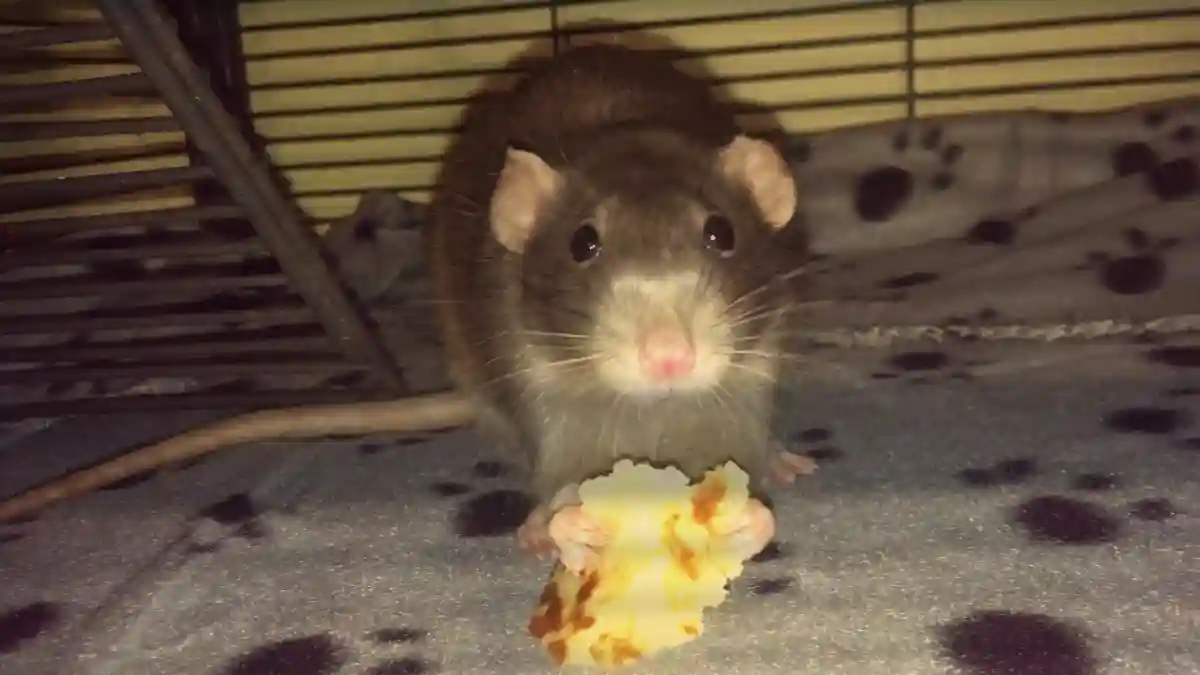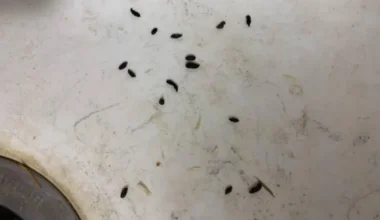Glue traps are made up of adhesive-coated sheets used to capture rodents like a mouse. However, it poses a threat to not just the mouse but to pets, children, and non-target wildlife. If you found a mouse crying on glue trap, it may have endured prolonged suffering, exhaustion, starvation, and injuries. It is up to you to release the poor critter caught in a glue trap using vegetable oil to loosen the adhesive.
If necessary, you might have to euthanize the critter to save it from further suffering.
What happens to a mouse crying on glue trap?
Depending on how often you inspect your glue trap, a mouse crying on glue trap may have been stuck for hours or even days. It could be trapped on its side, by its leg (or legs), or face down, and will cry out in distress.
A trapped mouse will struggle to free itself and will agitated, ending up more stuck in the glue. Sometimes, it could break bones, even tear off, or bite through its own limbs while trying to escape the sticky trap.
Once the mouse determines the fruitless struggle, it can succumb to exhaustion, collapse face down in the glue which lodges the adhesive on its nasal passages, and dies of suffocation. This painful experience on the inhumane mice glue trap can often take hours to days.
Mouse crying on glue trap: what to do

1. Free the mouse with vegetable oil
Mice are typically disease carriers and can transmit them to humans. Now, considering that the mouse is in agony, you want to wear gloves to protect yourself from getting bites, scratches, and contamination.
Move the mouse in the sticky trap to a transparent plastic container or box. Preferably, the container should have surface dimensions slightly larger than the glue trap and a minimum depth of 4 inches (10.2 cm).
Gently cover the mouse with a disposable rag to keep it calm. Apply the vegetable oil onto the trap and focus on the area where the mouse is trapped. You oy need a minimal amount of oil, and avoid direct contact with the mouse. Massage the oil into the glue gently with a cotton swab or soft cloth.
Alternatively, you can use baby oil or cooking spray to free a mouse crying on glue trap.
The gentle massage after applying the oil will cause the adhesive to gradually start to loosen for the mouse to free itself from the trap. Once freed, retrieve the trap from the container and place it in a sealable plastic bag and dispose of it in a garbage can.
Your final step is to get rid of surplus oil by dampening an old rag or cloth with warm water and squeezing out the excess. Wipe off oil residues on the mouse’s paws, head, and body to help the critter regulate its body temperature. If possible, give the mouse some time to rest and unwind.
2. Release the mouse into the wild
If it is not possible to release the mouse to an animal specialist, find a suitable spot in the natural environment to release it about 100 yards (91.44 meters) away, according to PETA (People for the Ethical Treatment of Animals).
Ideal places to release a captured mouse include nearby parks, forests, fields, or green spaces. Transport the mouse to the designated location while keeping the towel covering the container. To release the mouse, place the container on the ground near bushes, logs, or thick grass, to allow the mouse to find a safe hideout.
After the release, sanitize your materials with bleach. You can either discard the towels and cloth used to handle the mouse or wash them separately in a washing machine along with the gloves with hot water.
Wash your hands thoroughly under running water with soap. Make sure to create a rich lather and scrub your hands for at least 20 seconds, focusing on areas such as under your nails, the back of your hands, and between your fingers.
3. Save the critter from misery with asphyxiation
If the damage on the mouse crying on glue trap is extreme, asphyxiation by CO2 (carbon dioxide) might be an option to stop its suffering.
For this method, you need baking soda and white vinegar to create the gas that will humanely suffocate the mouse to death. You also need the following:
- sealable plastic container
- sealable plastic bag
- hose to connect the bag and container
- a separate container (glass or jug) for mixing the vinegar and baking soda
- fasteners, ties, and clothing items to secure the containers
CO2 euthanasia with readily available household materials is recognized by the AVMA (American Veterinary Medical Association). However, the guidelines are originally meant for veterinary professionals. So, determine if you can attempt this method without causing additional pain and distress to the mouse.
The plastic container is the euthanasia chamber for the mouse in this method while the plastic bag serves as the CO2 chamber where the gas is generated.
Begin the setup with the CO2 chamber by placing the baking soda at the bottom of the bag. Bring another container that contains vinegar into the bag, taking care not to spill it. When you eventually mix baking soda and vinegar, the reaction will generate CO2 gas that kills the mouse.
The appropriate ratio of vinegar to baking soda will depend on the size of your container. Try to create a concentration of 30% to 40% CO2 in the euthanasia container to induce unconsciousness in the mouse.
Place the rescued mouse caught crying on glue trap in the airtight plastic container and seal it properly sealed. You can use Tupperware containers.
Connect the euthanasia chamber containing the mouse and the bag containing using a hose. Secure the hose to the bag using a rubber band or tie. Carefully pour the white vinegar over the baking soda to produce CO2, which will flow through the short hose into the plastic container containing the mouse. Pour in about half of the vinegar and observe the mouse’s response. If your setup works, the mouse should lose consciousness and die painlessly.
4. Give the rodent a sharp blow to the head
If you can, deliver a forceful blow to the head of the mouse using a hammer or similar blunt object to cause a quick death. This method can be intimidating and emotionally challenging for some.
Make sure to restrict the movement of the mouse when delivering the strike. You can confine it to a corner of a robust sack or bag for a controlled environment before the striking action.
5. Fire a projectile
If killing the mouse crying on glue trap is the only option, use a small-caliber and low-power gun or air rifle firearm to save the rodent from misery.
High-powered guns carry the risk of ricocheting or penetrating through the rodent, while also spreading biological material over a larger area, resulting in increased mess and health hazards. Thus, a low-power air gun with a muzzle energy of around 12 foot-pounds (12fpe) and a .177 caliber is a better option.
Prioritize safety when considering shooting a mouse dead. If shooting is a suitable choice, take precautions to create a safe environment. For example, to avoid potentially hitting individuals or objects in its trajectory, make sure that your surrounding area is free from any obstructions or potential hazards.
Tips to keep mice away from your home
a. Seal entry points
“A mouse can get through a small, 6-7 mm hole (about the diameter of a normal-sized pen,” according to Anticimex. So, take a thorough walk around your house and carefully inspect for any cracks, holes, vents, or other access points. Caulk up with materials such as metal or cement to prevent mice and other rodents from entering.
b. Get rid of potential hideouts
Mice often hide in woodpiles, dense shrubbery, and objects stored near your residence. Discourage their presence by maintaining trimmed shrubs and short grass, trimming back branches that extend over your roof, and storing items like firewood, barbecues, and patio furniture at a minimum distance of 20 feet away from your property.
c. Work on your window screens
Install screens around chimneys, apply weather stripping to doors and windows, and repair any holes in window screens to protect your home against mice.
d. Remove their food and water sources
Mice have a diverse diet and can consume various items such as scraps, garbage, crumbs, pet food, seeds, and fruit. Do the following to get rid of mice food sources:
- Store food in airtight glass containers.
- Clean floors, counters, and pantries to remove potential food residue.
- Use rodent-proof containers for storing pet food and trash.
- Remove any fallen birdseed to discourage mice.
- Harvest fresh fruits and vegetables promptly to minimize food availability.
- Fix any leaks, moisture issues, or other sources of water that may attract mice.
Sources






